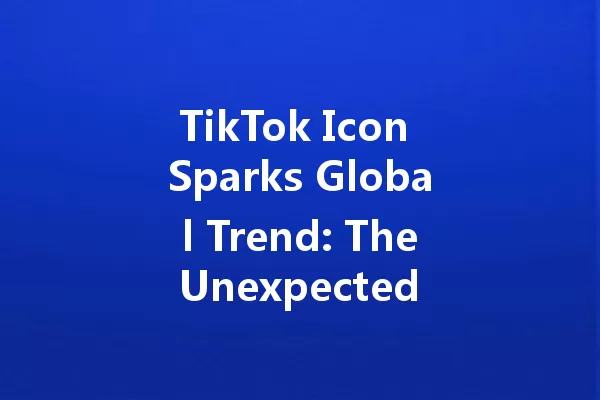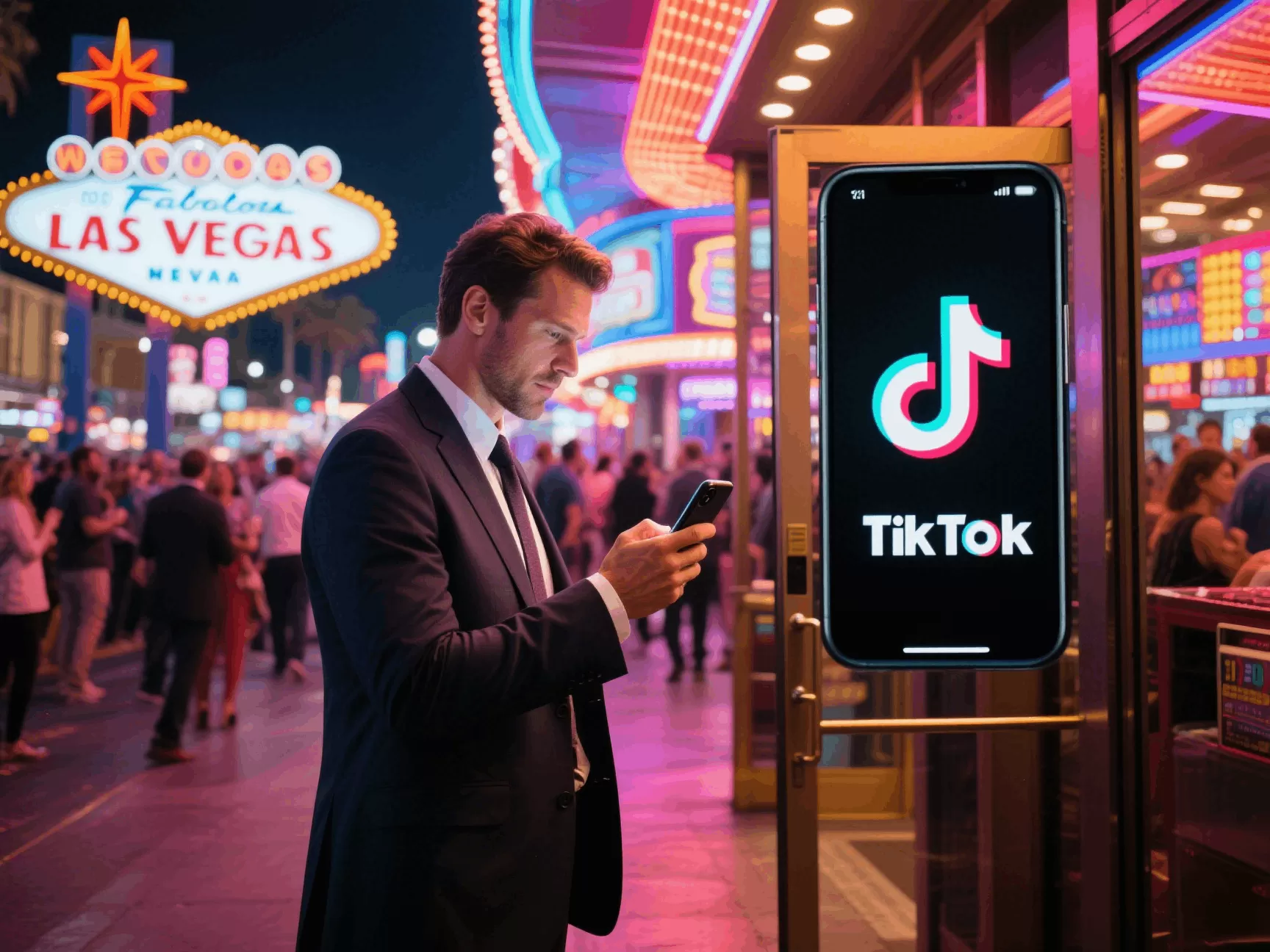
This article delves into the fascinating journey of the TikTok icon, exploring how it resonated with diverse audiences and sparked creativity worldwide. We examine the unexpected critiques that emerged, ranging from concerns about online privacy to discussions about the impact of social media on mental health. As the app’s popularity surged, communities began to push back against the perceived pressures associated with the platform, leading to an intriguing dialogue about authenticity and societal standards.
Through interviews with social media experts and cultural commentators, insights reveal the complexities behind the allure of the TikTok icon and the shifting perceptions of its role in today’s digital age. Join us as we unpack the phenomenon that not only shaped online interactions but also sparked significant debates about the responsibilities of tech companies and the users who engage with their platforms. Whether you’re a TikTok enthusiast or a casual observer, this exploration promises to offer a deeper understanding of the power and pitfalls of the iconic logo that continues to influence our global landscape.
## The Rise and Fall of the TikTok Icon
Cultural Phenomenon
The TikTok icon quickly went from being a simple logo to an emblem of modern digital culture. It’s hard to believe that this vibrant little symbol has infiltrated so many aspects of our everyday lives. It serves as a gateway to a platform where creativity and trends flourish, but this rise was not without its hurdles. As TikTok’s popularity soared, the icon became synonymous not just with entertainment but also with critical discussions surrounding social media influence and digital responsibility.
On one hand, users embraced the TikTok icon as a badge of creativity. Countless users shared their talents and ideas, from dance challenges to cooking tutorials, all under the watchful eye of the app’s logo. This element of social sharing ushered in a new way for people to interact with each other, fostering a sense of community that transcended geographical barriers. However, on the other hand, the backlash against this digital celebrity logo surfaced as issues around mental health and privacy began to garner attention.
The Backlash: Why It Matters
With the ever-expanding influence of the TikTok icon, various issues bubbled to the surface, prompting widespread critique. The backlash didn’t emerge overnight; it stemmed from a combination of factors that intertwined with our digital identities.
在所有文章50%位置插入在所有文章50%位置插入在所有文章50%位置插入在所有文章50%位置插入在所有文章50%位置插入在所有文章50%位置插入在所有文章50%位置插入在所有文章50%位置插入在所有文章50%位置插入在所有文章50%位置插入在文章中间添加自定义内容在文章中间添加自定义内容在文章中间添加自定义内容在文章中间添加自定义内容在文章中间添加自定义内容在文章中间添加自定义内容在文章中间添加自定义内容在文章中间添加自定义内容在文章中间添加自定义内容在文章中间添加自定义内容在文章中间添加自定义内容在文章中间添加自定义内容在文章中间添加自定义内容在文章中间添加自定义内容
There’s growing evidence that excessive time spent on platforms like TikTok can lead to anxiety, depression, and other mental health issues. The pressure to constantly create and consume content can be overwhelming for many.
Users grew increasingly concerned about their data (or lack thereof) being utilized by these platforms. People began questioning whether it was worth the cost of their personal information for the sake of entertainment.
Many creators voiced their opinions about the platform’s tendency to amplify certain trends while sidelining others. This has sparked heated debates around cultural sensitivity and representation.

Underneath these issues lies a fundamental question: at what point does a symbol meant for fun and creativity become a source of anxiety and conflict?
Understanding the Impact
To get a clear picture of how the TikTok icon’s rise and backlash impacted different demographics, let’s look at the data. Here’s a breakdown of how various age groups are engaging with TikTok:
| Age Group | Percentage of Users (%) | Primary Content Type | Common Concerns | Engagement Level |
|---|---|---|---|---|
| 13-17 | 30 | Challenges, Trends | Mental Health | High |
| 18-24 | 40 | Vlogs, Comedy | Privacy | Very High |
| 25-34 | 20 | DIY, Education | Cultural Sensitivity | Moderate |
| 35+ | 10 | Informative | Skepticism | Low |
This table showcases how different age groups interact with TikTok and the concerns they have. The data not only highlights the platform’s vast usage but also reflects the complexity of its influence. Engaging with the TikTok icon has become a nuanced experience, prompting creators and consumers alike to consider what it means to be part of this digital ecosystem.
The TikTok icon has transformed into much more than just a simple logo; it’s become a vivid cultural emblem that signifies both creativity and a sense of community within the vast landscape of digital interaction. For countless people, this little symbol encapsulates a lifestyle that is deeply intertwined with social media trends, affecting how we perceive entertainment, fashion, and even social movements. It serves as a gateway for expression and connection, allowing users to showcase their talents and share their stories in a way that resonates globally.
However, as delightful as this platform may seem at first glance, it has not been without its share of challenges and critiques. The article outlines several pressing issues that users face, particularly concerning mental health. The relentless pressure to produce content that garners attention can take a toll, leading many to experience anxiety or feelings of inadequacy. Additionally, the risks related to privacy cannot be overlooked; with personal data being harvested at an alarming rate, users find themselves increasingly concerned about their online safety. Cultural appropriation is another hot topic, with users and creators grappling with the implications of borrowing and sharing cultural elements without proper acknowledgment or respect. These issues make it clear that while TikTok is a space for creativity, it is also a realm that deserves serious scrutiny and reflection.
Frequently Asked Questions (FAQ)
What is the significance of the TikTok icon in digital culture?
The TikTok icon has evolved into a cultural symbol representing creativity and community in the digital space. It refers not only to the app itself but also to a way of life for many users, influencing trends in entertainment, fashion, and more.
What are some common concerns related to TikTok according to the article?
The article highlights several concerns, including mental health issues due to the pressure of content creation, privacy risks associated with data usage, and the potential for cultural appropriation within the platform’s trending content.
How does TikTok impact different age groups?
According to data presented, TikTok’s influence varies among age groups. For instance, users aged 13-17 primarily engage with challenges and trends, while those aged 18-24 are more focused on vlogs and comedy. Concerns also differ, with younger users worrying about mental health and older users being skeptical about the platform’s credibility.
Why has there been a backlash against the TikTok icon?
The backlash stems from various factors, including mental health concerns related to excessive screen time, issues of privacy and data security, and discussions surrounding cultural representation. Users began to question the implications of such a widespread digital influence on their lives and communities.
What can users do to mitigate the adverse effects of TikTok?
To reduce the negative impacts, users can set time limits on their app usage, engage selectively with content, and practice digital detoxes to maintain a healthy balance between online interactions and real-world relationships.
在文章结尾添加自定义内容在文章结尾添加自定义内容在文章结尾添加自定义内容在文章结尾添加自定义内容在文章结尾添加自定义内容在文章结尾添加自定义内容在文章结尾添加自定义内容在文章结尾添加自定义内容在文章结尾添加自定义内容在文章结尾添加自定义内容在文章结尾添加自定义内容在文章结尾添加自定义内容在所有文章结尾添加内容在所有文章结尾添加内容在所有文章结尾添加内容在所有文章结尾添加内容在所有文章结尾添加内容在所有文章结尾添加内容在所有文章结尾添加内容在所有文章结尾添加内容在所有文章结尾添加内容